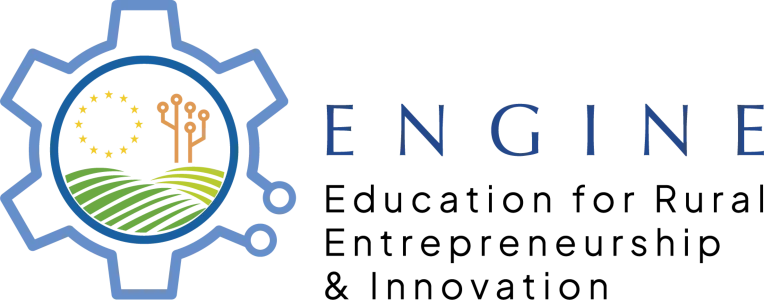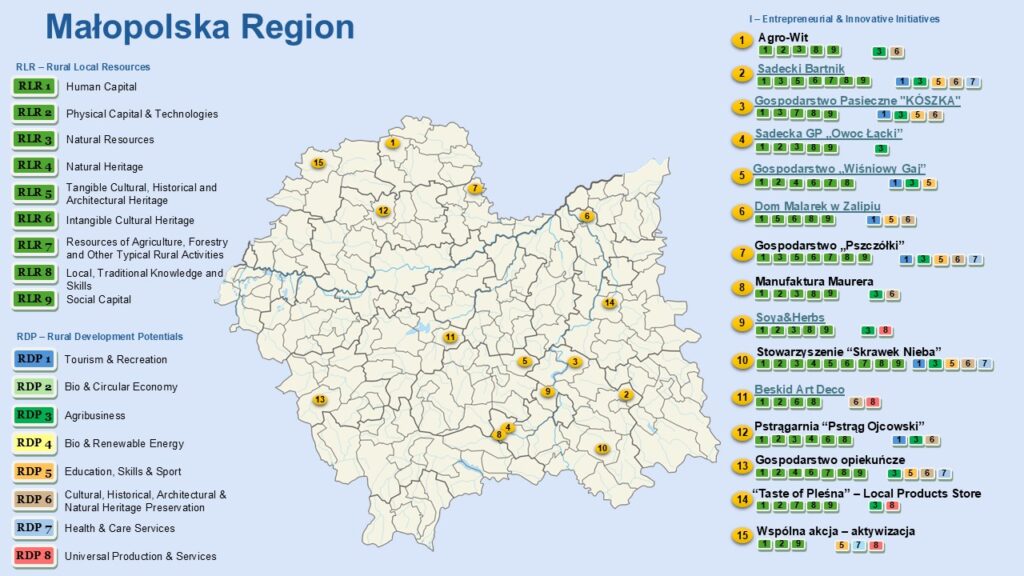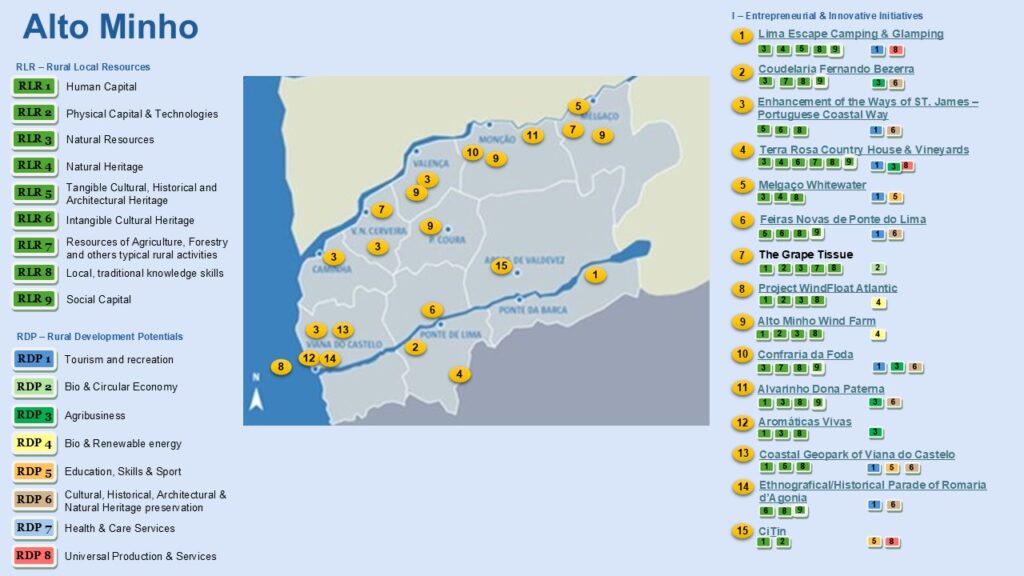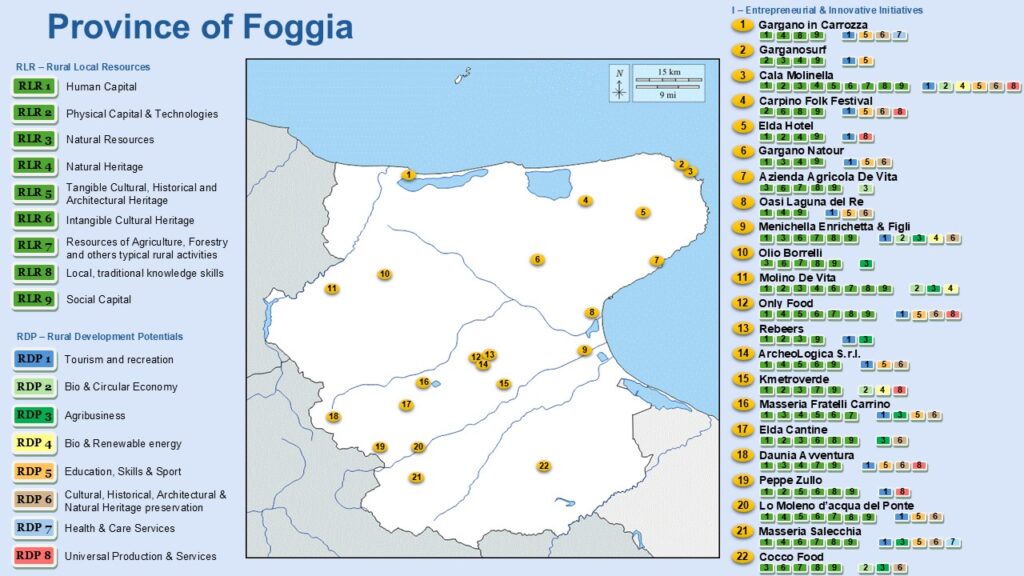IO2. Rural Development Potential for Innovation and Entrepreneurship - Analysis Framework
The following document is a universal and practical methodological guide developed as part of the ENGINE project, constituting the main result of the first stage of the project’s implementation.
Discover the rural innovation potential:
Read our IO2 Rural Development Potential for Innovation and Entrepreneurship – Analysis Framework
Purpose and Significance of the Document
The document presented here, entitled Rural Development Potential for Innovation and Entrepreneurship – Analysis Framework constitutes the key intellectual output of WP2, providing a practical guide accompanied by a toolkit for diagnosing the developmental potential of rural areas in terms of entrepreneurship and innovation. The document is universal in nature. Although designed primarily for higher education institutions to support the design of educational programs, it can also be utilized by other entities, including educational institutions, local authorities, NGOs, and development agencies, to promote education, entrepreneurship, and innovation in rural areas.
The aim of this document is twofold:
to provide a practical and universally applicable tool that enables a wide range of institutions—including schools and universities, training providers, non-governmental and community organisations, as well as authorities at various levels - to identify and harness the potential of rural areas for the development of innovative and entrepreneurial initiatives, and
to support education, strategic planning, community engagement, and economic development by fostering a deeper understanding of local resources and the developmental potential of rural areas, alongside the competencies required to utilise them effectively.
Scope and Structure of the Content
In terms of content, the document offers both a robust theoretical foundation and detailed practical guidance for rural development. It opens with a comprehensive section on identifying and mapping rural development potential for entrepreneurship and innovation, encompassing detailed methodological steps for defining the study area, identifying local resources, assessing development potentials, and creating, validating, and finalising the Rural Development Potential Map. This is followed by regional case studies from Małopolska, Münsterland, Alto Minho, and the Province of Foggia. Each case study begins with a socio-economic profile of the region, outlines its rural resources, identifies key rural development potentials, and showcases exemplary initiatives. The document concludes with a comprehensive list of references and is supplemented by an appendix containing a range of tools and templates designed to facilitate effective implementation of the framework.
Methodological Framework for Analysing Rural Development Potential
The core of the document lies in its comprehensive description of the methodology for analysing the development potential of rural areas, structured into six distinct stages. Each stage is meticulously outlined, with recommendations regarding data sources, implementation methods, stakeholder engagement, and anticipated results.
Step 1
Define the Study Area
• Select a region
• Identify rural areas within the region based on local administrative and/or functional criteria
Step 2
Identify Rural Local Resources
• Use secondary data (statistical data, local development strategies, reports, and academic research)
• Use secondary data (statistical data, local development strategies, reports, and academic research)
Step 3
Asses Rural Development Potentials
• Determine which resources can serve as a foundation for innovative and entrepreneurial activity
• Focus on different sectors (i.e. agritourism, renewable energy, bioeconomy, education, and healthcare services)
Step 4
Create an Initial Rural Development Potential Map
• Identify at least 15 E&I initiatives based on rural local resources and potentials and define the associated competency needs
• Develop a visual map illustrating the links between: resources → potentials → initiatives.
Step 5
Validate and Refine the Rural Development Potential Map
• Organize and conduct arural consultation meeting with stakeholders
• Validate the map and gather input regarding rural local resources, development potentials and competency needs
Step 6
Finalize the Rural Development Potential Map
• Incorporate feedback from experts and stakeholders.
• Ensure the final map includes at least 5 categories of resources and 15 initiatives.
Application Areas of the Analysis Framework
Although originally conceived as a foundation for developing an educational tool tailored to rural contexts and intended for integration into university curricula, this framework has a far broader scope of application. It can be effectively utilised by higher education institutions, research centres, local authorities, non-governmental organisations, training providers, rural development agencies, and other entities seeking to identify local rural resources and unlock their innovative and entrepreneurial potential.
Practical Applications for Higher Education and Regional Stakeholders
In practical terms, this guide enables these institutions:
to adopt a standardised, evidence-based approach to diagnosing and mapping rural development potential
to identify the knowledge, skills, and competences necessary to activate this potential, particularly in relation to entrepreneurship and innovation
to design or revise educational and training programmes so that they align with real opportunities and challenges in rural areas
to support local leaders, entrepreneurs, and grassroots organisations in creating context-sensitive, place-based initiatives, and
to engage communities and stakeholders in meaningful dialogue about the sustainable future of their regions.
Rural Development Potential Maps for Selected Regions
The document includes condensed versions of Rural Development Potential Maps for the regions of Małopolska, Münsterland, Alto Minho, and the Province of Foggia. Each map comprises a concise regional profile, an overview of rural areas, and a summary of local resources linked to identified development potentials. Furthermore, each map presents four selected entrepreneurship and innovation initiatives, chosen from a wider list of at least fifteen identified per region, representing those considered most inspiring and impactful. Collectively, these maps provide comprehensive overviews of local resources and development opportunities within the studied regions, showcase exemplary innovation- and entrepreneurship-driven initiatives, and identify the key competencies required to support and advance them.
Key Benefits of the Analysis Framework
The potential benefits of the Rural Development Potential for Innovation and Entrepreneurship – Analysis Framework include:
serving as a tool for universities and training institutions to design field-based learning modules, develop case studies, and adapt curricula to align with actual regional needs,
enabling stakeholders to gain deeper insights into the latent potential of their regions and to develop targeted strategies for mobilising local resources effectively,
supporting the identification of local resources and their alignment with innovation and entrepreneurship opportunities to strengthen rural economies,
providing a robust methodological foundation for public policy development, guiding both private and public investments towards context-specific and sustainable initiatives,
assisting in the revitalisation of declining regions through targeted initiatives such as the establishment of innovation hubs, incubators, and sustainable tourism models, and
strengthening cooperation between educational institutions, local authorities, non-governmental organisations, rural development agencies, and communities to ensure the effective implementation and long-term development strategies.
A Universal and Practical Tool for Unlocking Rural Development Potential
Rural Development Potential for Innovation and Entrepreneurship – Analysis Framework is a practical yet flexible instrument designed to identify and harness the development potential of rural areas across the European Union. Grounded in a universal six-step methodology that is readily adaptable to diverse regional contexts, it emphasises an approach rooted in local resources and active engagement of stakeholders. The framework is further enhanced by a comprehensive suite of ready-to-use tools—including templates, scenarios, and forms—that collectively facilitate its effective application and operationalisation.
Want to use our tools?
If you’d like to download and reuse the editable templates and materials developed within the ENGINE project, click button to access the full collection. These ready-to-use resources are designed to support the replication of ENGINE results in your own work.





